Warren Buffett is known worldwide for his incredible investing success. He’s the chairman and CEO of Berkshire Hathaway, a conglomerate that owns or holds major stakes in companies like GEICO, Dairy Queen, Coca-Cola, and Apple. Because of his uncanny ability to pick winners and hold them for the long run, people often view Buffett in almost mythical terms—some call him “The Oracle of Omaha,” a nod to his home base in Nebraska and his remarkable forecasting record. Yet, while many know him for his financial prowess, fewer understand the psychological underpinnings that drive his decisions.
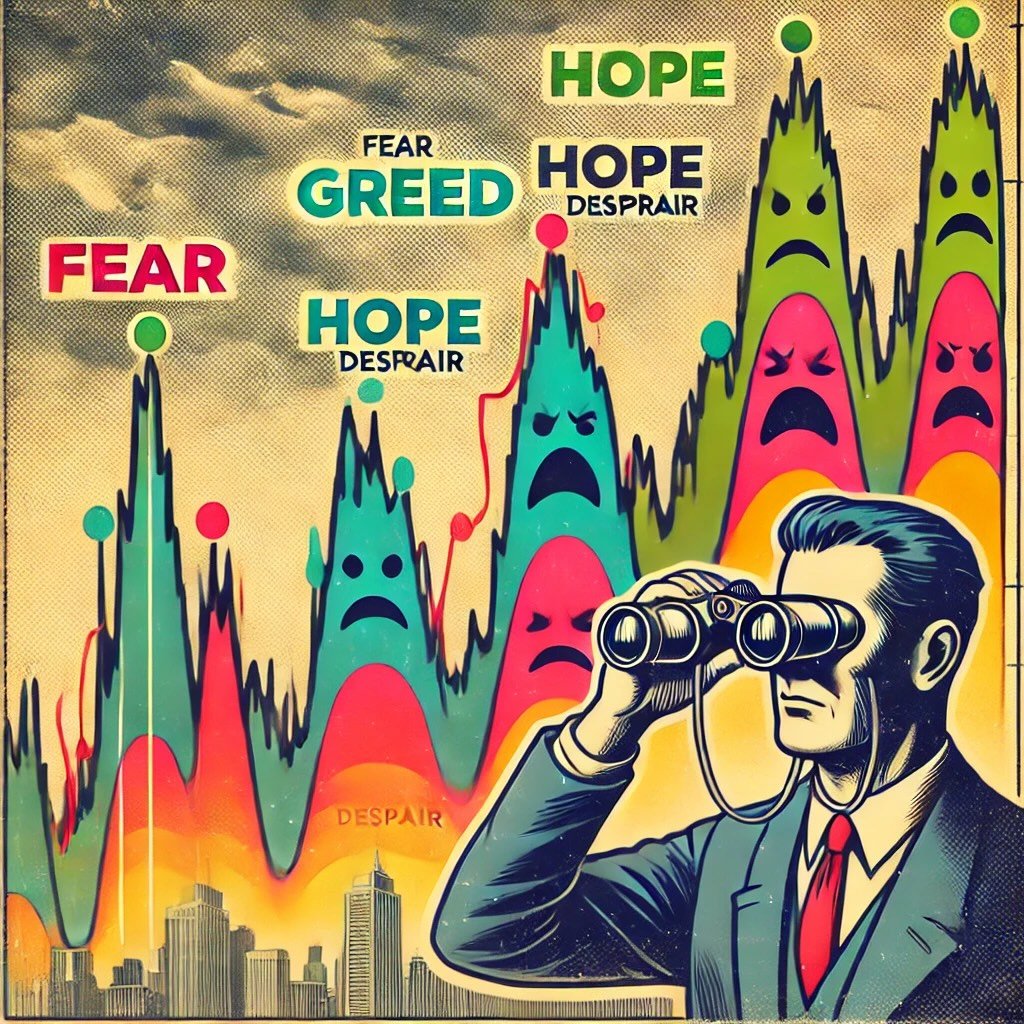
Yes, you read that right. Buffett isn’t just someone who can read a balance sheet well or negotiate brilliant deals. He’s also deeply attuned to the mindset of the market. He understands that human beings are emotional creatures. He knows they respond to fear, greed, hope, and despair in ways that cause markets to swing—sometimes wildly. This emotional turbulence can drive prices above or below what rational analyses might predict. Buffett recognizes these moments as opportunities.
We’ll dive into how Buffett uses market psychology to his advantage. We’ll explore why he urges investors to be “fearful when others are greedy and greedy when others are fearful.” We’ll look at how he identifies both undervalued and overvalued markets, explains the role of patience, and seizes on critical opportunities during times of collective panic. We’ll see that while numbers and valuations are always important, it’s often the capacity to read crowd psychology that sets the great investors apart from the merely good ones.
We’ll begin by laying the groundwork: understanding the emotional landscape that Buffett navigates daily. Markets are often described in terms of numbers—stock prices, P/E ratios, bond yields—but they’re driven by humans. Emotions like fear and greed can create waves of buying or selling that amplify small trends into giant booms or busts. Buffett recognized early in his career that if he could keep his own emotions in check and observe these psychological waves from a more detached standpoint, he could capitalize on the mistakes of others.
Next, we’ll talk about spotting market irrationality. Buffett prides himself on staying away from frenzied speculation and hype. In fact, he missed out on the dot-com bubble of the late 1990s, much to the chagrin of people who thought the old man was behind the times. He didn’t fully grasp or appreciate the valuations of those tech startups, so he stayed in his lane and avoided them. When the bubble burst, many realized how wise he’d been.
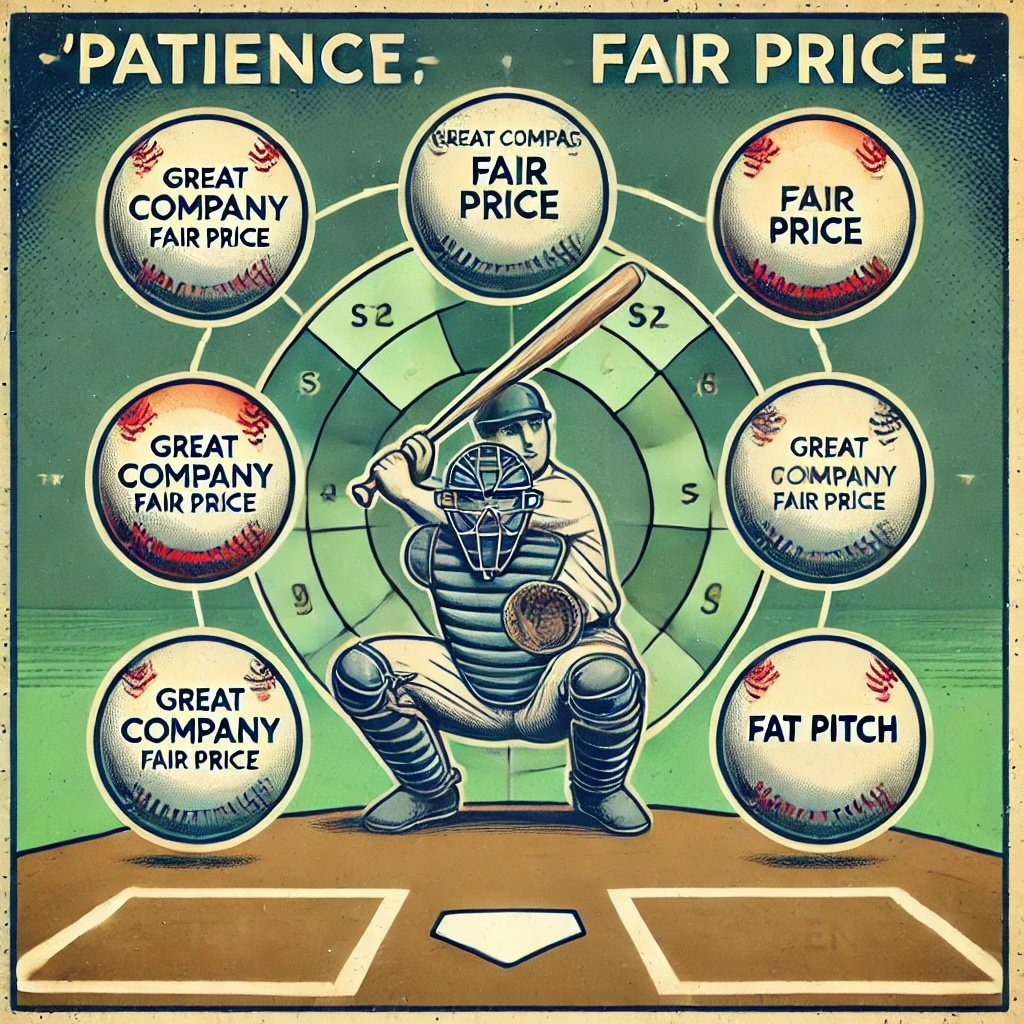
Then we’ll examine his unwavering patience. Buffett is famous for waiting for the “fat pitch,” a baseball metaphor that underscores his willingness to let dozens or even hundreds of “pitches” go by before swinging at the one that aligns with his circle of competence and is priced attractively. He prefers to buy a great company at a fair price rather than a fair company at a great price. Above all, he’d rather wait than settle.
Further, we’ll delve into how he capitalizes on fear. Buffett has often swooped in during times of crisis—moments when everyone else is panicking—to inject money into the market or specific companies. This isn’t just a random strategy. He is effectively using the market’s collective despair to buy assets at bargain prices. He famously struck deals with Goldman Sachs during the 2008 financial crisis and with Bank of America when the banking sector was reeling, negotiating favorable terms because he was one of the few big players willing to step into the chaos.
But Buffett doesn’t keep his wisdom locked away. He often teaches others about long-term thinking, cautioning that following the herd is a dangerous game. He encourages patience and consistency, pointing to the powerful compounding effect of letting good investments run for years or decades. He disdains short-term speculation, and he remains skeptical of fleeting fads.
So let’s get started. We’ll kick things off with a look at Buffett’s fundamental understanding of market psychology, focusing on that famous dynamic between fear and greed.
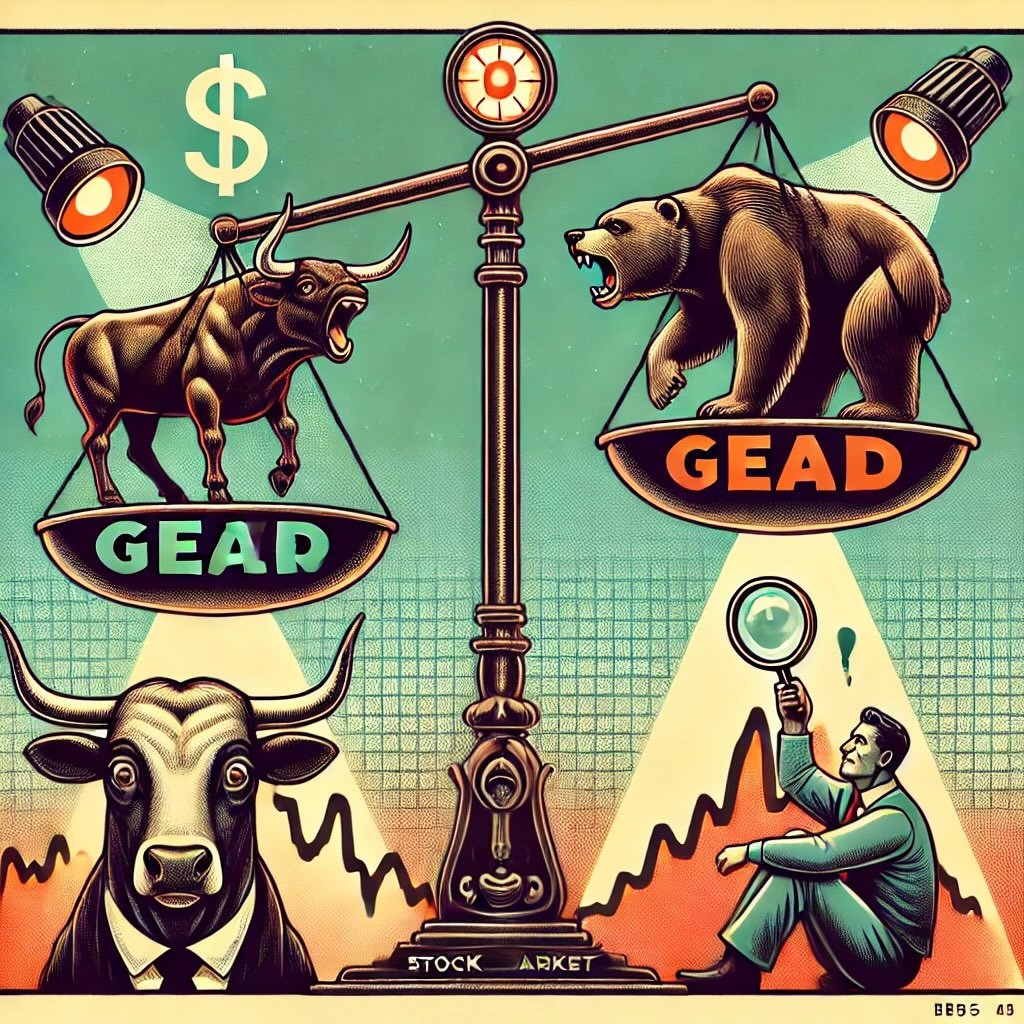
The Foundation: Buffett’s Understanding of Market Psychology
Fear and Greed: The Market’s Driving Forces
Warren Buffett once said, “Be fearful when others are greedy, and be greedy when others are fearful.” That quote might be simple, but it’s also a profound statement about human nature. When markets are roaring and everyone’s talking about quick gains, greed can take over. Prices soar. Rational valuations go out the window. Meanwhile, in a deep recession or crisis, fear reigns supreme. Investors see only doom and gloom, so they sell assets at any price to avoid further losses.
Buffett has observed these cycles many times. He understands that markets aren’t purely rational. They’re driven by emotion-laden humans, some of whom are chasing the next big thing and others who are terrified of losing their shirts. He also knows that emotional extremes create opportunities. When investors as a group become too euphoric, it’s a sign that prices may be overheating. When they become too despondent, it may signal bargains.
The Emotional Side of Investing
Many new investors think they just need to learn how to read financial statements or study a company’s revenue growth. Yet, Buffett emphasizes the role of emotional discipline. He points out that fear and greed can make even the best analysis irrelevant if the investor panics. When market swings become dramatic, people often forget their carefully reasoned strategies and panic-sell. Or they might chase a stock that’s been skyrocketing, afraid of missing out, even though that stock might be absurdly overvalued.
Buffett, however, trains himself to remain calm. He rarely flinches when headlines scream “Market Crash!” Instead, he asks whether the intrinsic value of a company has changed. If it hasn’t, and the price is just dropping because of fear, he views that as a chance to buy more at a discount.
Market Cycles and Human Behavior
Buffett understands that markets move in cycles of boom and bust, often tied to collective investor sentiment. During booms, people convince themselves that “this time is different” and that prices can only go up. Then, when a correction or crash occurs, the mood shifts to “we’ll never recover.” Buffett’s advantage lies in recognizing these mood swings as just that—moods. They rarely reflect the actual long-term prospects of well-managed businesses.
He doesn’t predict crashes with a crystal ball. Instead, he positions himself to take advantage of them when they happen. He keeps cash reserves and lines of credit open. He looks for sectors that have been beaten down by negative news or widespread pessimism, and he steps in when others are too emotionally drained to do so. This pattern has repeated itself multiple times, from the savings and loan crisis in the late 1980s to the subprime mortgage meltdown in 2008.
Building on Ben Graham’s Insights
It’s important to note that Buffett’s understanding of market psychology is rooted in the teachings of Benjamin Graham, the father of value investing. Graham viewed the market as a manic-depressive entity, sometimes offering stocks at crazy highs, other times at ridiculous lows. He told investors to exploit this fluctuation rather than be exploited by it. Buffett’s twist on Graham’s approach is his focus on high-quality businesses he can hold indefinitely, but the psychological insight remains central.
In essence, Buffett’s foundation is that human behavior—particularly the tendency toward emotional extremes—creates inefficiencies in the market. These inefficiencies can be exploited by anyone who can keep their own emotions in check. That’s the cornerstone.
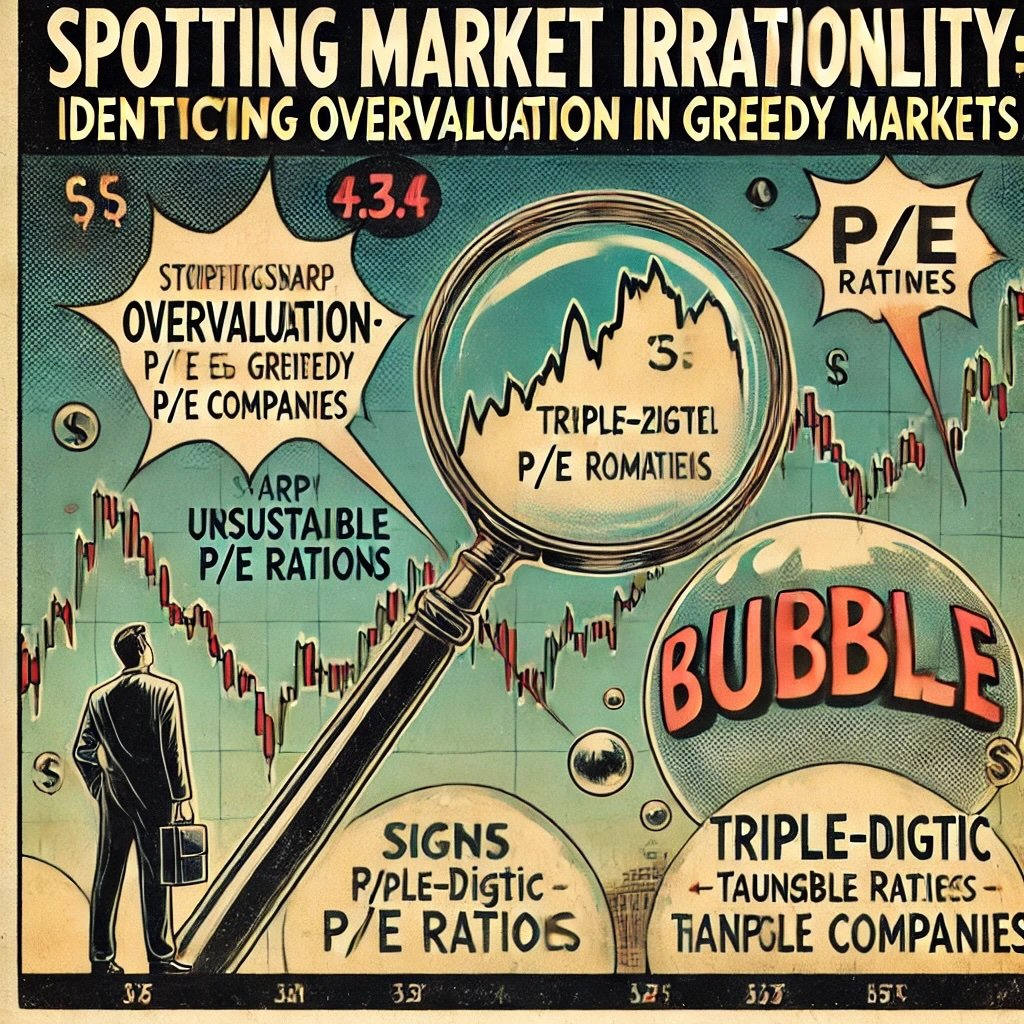
Spotting Market Irrationality
Identifying Overvaluation in Greedy Markets
When a market is in a speculative frenzy, it may look unstoppable to the casual observer. Stocks keep hitting new highs, IPOs pop 50% on the first day of trading, and media outlets buzz about “the next big thing.” Yet, Buffett becomes more cautious during these times. He’s skeptical because he recognizes the signs of greed-driven euphoria: lofty valuations with no fundamental justification, triple-digit price-to-earnings ratios, or companies valued more for hype than earnings.
A classic example occurred in the late 1990s dot-com boom. Many criticized Buffett for avoiding tech startups like Pets.com, which soared in valuation without a clear path to profits. He stuck to more tangible businesses, refusing to invest in something he didn’t fully understand. When the bubble burst, companies with little real revenue collapsed, validating his caution.
Recognizing Undervaluation During Fearful Times
On the other side of the coin, Buffett grows more aggressive when headlines are uniformly grim. During recessions or market crashes, good companies can see their stocks hammered simply because investors panic and sell everything. Buffett doesn’t automatically assume these companies are bad. Instead, he might find a jewel among the rubble—firms that still have strong cash flows, solid balance sheets, or enduring competitive advantages.
For instance, in the financial crisis of 2008–2009, he took stakes in Goldman Sachs and General Electric under attractive terms. Both were experiencing near-panic selling, with share prices dropping sharply. Buffett stepped in with cash. Many saw this as a vote of confidence. He was effectively betting that these major businesses, despite current turmoil, would survive and eventually thrive.
Using Valuation Metrics Over Hype
Buffett famously ignores most market noise. He doesn’t care if a stock is a hot topic on social media or if day traders love it. Instead, he examines business fundamentals. What are its margins? Is it generating free cash flow? Is the management team trustworthy? These questions matter more to him than any short-term price movement or hype cycle.
His reliance on tangible metrics helps him stay grounded. If a company’s intrinsic value significantly exceeds its market price, that’s a candidate for purchase—assuming it fits his criteria for quality. Conversely, if the market price seems wildly out of line with fundamentals, he’s likely to stay away, no matter how enticing the short-term gains appear.
Avoiding Herd Behavior
Market irrationality often happens when people follow the crowd. If everyone is buying, you feel the urge to buy, too, because nobody wants to miss the party. And if everyone is selling, you might do the same just to avoid losses. Buffett sidesteps this by reminding himself and others that the crowd can be dangerously wrong. Herd thinking often manifests in bubbles or panics, both of which create distortions in asset prices.
He’s fond of pointing out that you don’t get extra credit for difficult decisions in investing. The simpler choice—backed by rational evaluation—often proves superior. If the herd is stampeding toward a cliff, being contrarian can literally save your portfolio. But contrarianism for its own sake isn’t the goal; it’s about recognizing genuine mispricing and acting appropriately.
Data Plus Psychology
At the heart of spotting market irrationality is the combination of data (like P/E ratios, cash flow statements, debt levels) and psychology (fear, greed, euphoria, despair). Buffett merges these two elements smoothly. He collects data meticulously, but he also tracks where the emotional pendulum in the market is swinging. When valuations and emotional sentiment align to create a bargain—or a clear sign of a bubble—he acts accordingly.
This approach may sound simple, but it isn’t easy. It takes a strong stomach to go against the crowd. However, that’s precisely where market psychology can be most profitable.
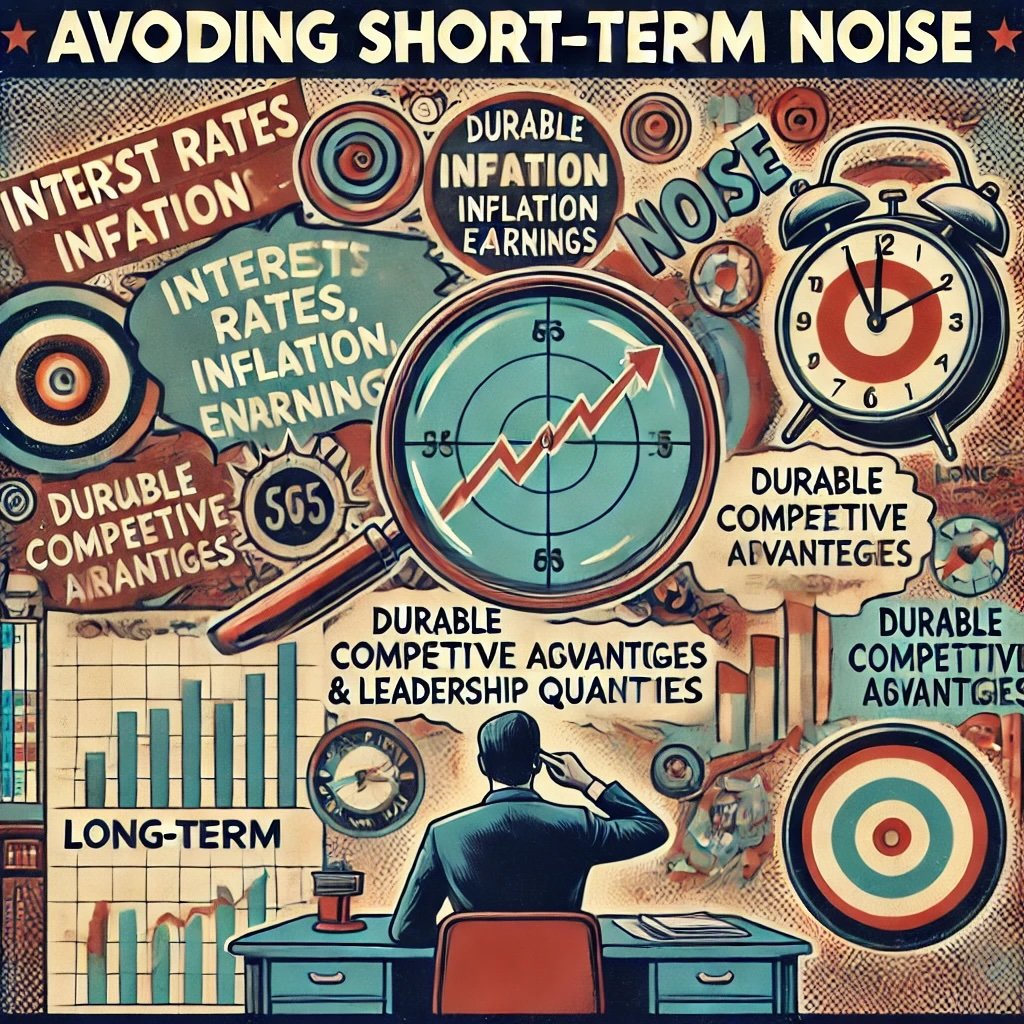
Leveraging Patience and Discipline
The Role of Patience in Market Timing
In investing, many people think timing is everything. They jump in and out of stocks, attempting to catch the perfect wave. Buffett disagrees. He believes in patience: waiting for the right moment rather than trying to guess short-term fluctuations. He compares investing to baseball batting, emphasizing that in the stock market, there’s no umpire calling strikes. You can let pitch after pitch go by until you see the ideal one.
This patience is rooted in his understanding that not every opportunity is worthwhile. Sometimes markets are just too expensive. Sometimes the companies available don’t match his strict criteria. Rather than force a move, he holds cash or stays with his existing holdings. This mindset is incredibly powerful, because it means he only invests when the odds are stacked in his favor.
Avoiding Short-Term Noise
Market headlines can be deafening. Every day, there’s a slew of updates: interest rates, inflation, job reports, political turmoil, corporate earnings, and countless rumors. Short-term traders feast on this noise. Buffett largely ignores it. He focuses on where a company might be five or ten years down the road. Will it have a durable competitive advantage? Is it run by ethical and competent leaders?
When you tune out the daily hype, you’re less likely to make rash decisions. Buffett’s trades often surprise people because they seem “slow.” In reality, he’s done rigorous homework behind the scenes and is waiting to see if the price aligns with his estimate of fair value. If it doesn’t, he’s content to wait weeks, months, or even years.
Staying Within the Circle of Competence
Buffett’s famed “circle of competence” concept underscores his discipline. He focuses on industries and businesses he understands—banking, insurance, consumer goods, utilities, and certain tech holdings like Apple, which he views more as a consumer products company than a pure tech enterprise. By restricting his investment universe, he reduces emotional guesswork and the risk of speculation in areas he can’t evaluate confidently.
Many investors get tempted by the latest hot sector: biotech, crypto, electric vehicles—whatever is trending. Buffett rarely follows trends. If he lacks the knowledge to grasp a sector thoroughly, he simply abstains. This refusal to chase shiny objects keeps him from overpaying for hype. It also protects him when fads eventually fade, which they often do.
Discipline in Overheated Markets
Discipline means holding back when everyone else is pouring money into a market. When tech stocks soared in the late 1990s, Buffett stood aside. When housing prices skyrocketed in the early 2000s, he showed caution around mortgage-related derivatives. This discipline can make him appear out of touch or overly conservative at times, but when bubbles burst, it becomes clear he was preserving capital.
Moreover, discipline doesn’t end at purchasing. Buffett also exercises patience in holding. He doesn’t dump stocks at the first sign of trouble if he still believes in the underlying business. Even a short-term drop of 30% might not alarm him if the fundamentals remain strong. This ability to endure volatility is psychologically challenging for most investors, but it’s central to how Buffett maintains long-term gains.
Emotional Detachment Through Rules
One of the best ways Buffett stays disciplined is by setting clear, rational rules—rules that override emotional impulses. For instance, he might set a maximum price-to-earnings ratio he’s willing to pay. Or he might require a strong history of consistent earnings growth before even considering a stock. These guidelines serve as guardrails, preventing him from getting swept away by the enthusiasm or panic that plagues the market.
Over the decades, his track record suggests these guardrails work. By insisting on discipline, he doesn’t claim immunity to mistakes—he’s made a few, including some ill-fated airline investments—but he reduces their frequency. And he’s quick to course-correct when new information suggests it’s time to pivot.
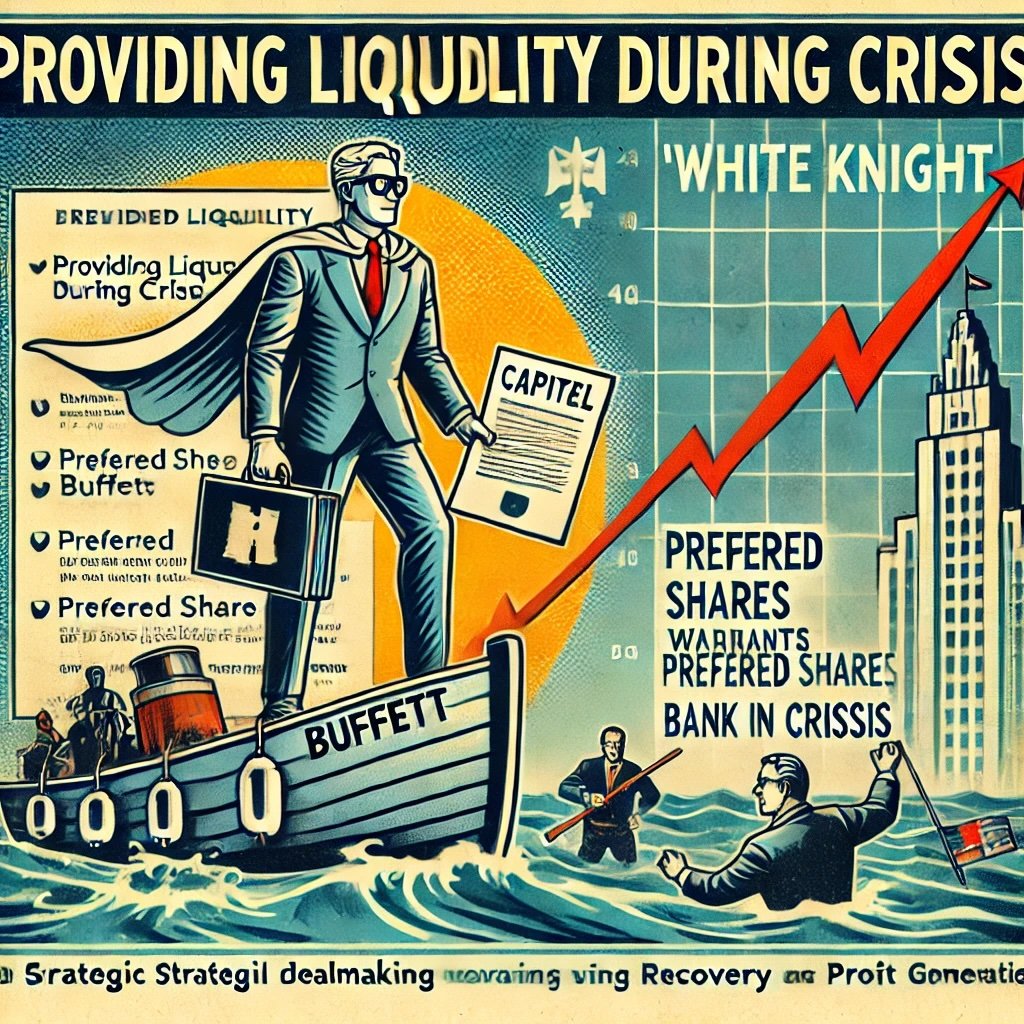
Capitalizing on Fearful Markets
Buying When Others Panic
It’s one thing to say “Buy low, sell high.” It’s another to actually do it when markets are in freefall. During moments of crisis, investors frequently ditch their long-term strategies in a wave of panic selling. Buffett stands ready to buy. He sees these chaos-filled moments as rare chances to purchase quality assets at deeply discounted prices.
Consider the 2008 financial meltdown. Major banks were failing, the stock market plummeted, and every news outlet screamed financial Armageddon. Buffett stepped in with capital for companies like Goldman Sachs. He didn’t act because he was certain the downturn would end in a month or two. He acted because he saw that these institutions, despite the turmoil, still had value. By providing funds when few others could or would, he secured favorable deals—like special preferred shares with high-interest payouts. Over time, these deals yielded enormous returns.
Providing Liquidity During Crisis
Buffett also plays the role of lender or “white knight” during crises. When a company or sector is strapped for cash, and nobody else has the courage to step in, Buffett negotiates from a position of strength. This isn’t just altruism. By being one of the few parties willing to supply capital, he can demand excellent terms—such as convertible preferred shares or warrants that give Berkshire Hathaway a significant upside when the crisis abates.
His dealmaking prowess came to the fore during the 2011–2013 period, when he invested heavily in Bank of America. The bank needed a confidence boost amid post-recession anxieties. Buffett provided capital, and in exchange, he received a sweetheart deal that generated billions in profits over time. Market psychology played a key role here. Fear was so rampant that Bank of America couldn’t raise funds elsewhere under favorable conditions. Buffett stepped in, relieving the bank’s desperation and securing a big return for himself.
Reassuring Markets With Confidence
Because of his standing and reputation, Buffett’s moves can also stabilize broader market sentiment. If Berkshire Hathaway invests in a battered sector, analysts and retail investors often see it as a sign the worst might be over. This psychological impact can help a sector rebound more quickly than it would have otherwise.
He doesn’t announce these moves explicitly to prop up markets, but he’s aware that his decisions send signals. In some cases, he even offers public statements encouraging people to remain optimistic about America or about the future of business. This blend of financial commitment and vocal support can temper fear and prevent a self-fulfilling spiral of panic.
The Advantage of Holding Cash
One reason Buffett can act boldly in fearful markets is that he maintains a substantial cash position or liquid assets. While some criticize Berkshire Hathaway for holding “too much cash,” Buffett views it as an opportunity fund. He doesn’t want to be forced to sell stocks at bad prices during a downturn. Instead, he wants to be the buyer of last resort, snapping up bargains while everyone else is scared or tapped out.
This approach underscores his deep respect for market psychology. He knows that crises will come—it’s just a matter of when. By having ample cash and credit capacity, he can exploit those once-in-a-lifetime moments of panic rather than being a victim of them.
Contrarian, Not Reckless
It’s worth noting that Buffett isn’t reckless. He’s not buying junk companies just because they’re cheap. He still requires strong business fundamentals or at least a well-founded belief that the troubled company can recover. His contrarian stance isn’t about blindly going against the crowd; it’s about carefully choosing undervalued, high-quality targets at moments when fear has driven prices far below their intrinsic value.
In sum, Buffett’s success during fearful markets isn’t luck. It’s the product of planning, emotional control, and an intimate understanding of how panic distorts prices. When others run for the exits, he’s often stepping through the door.
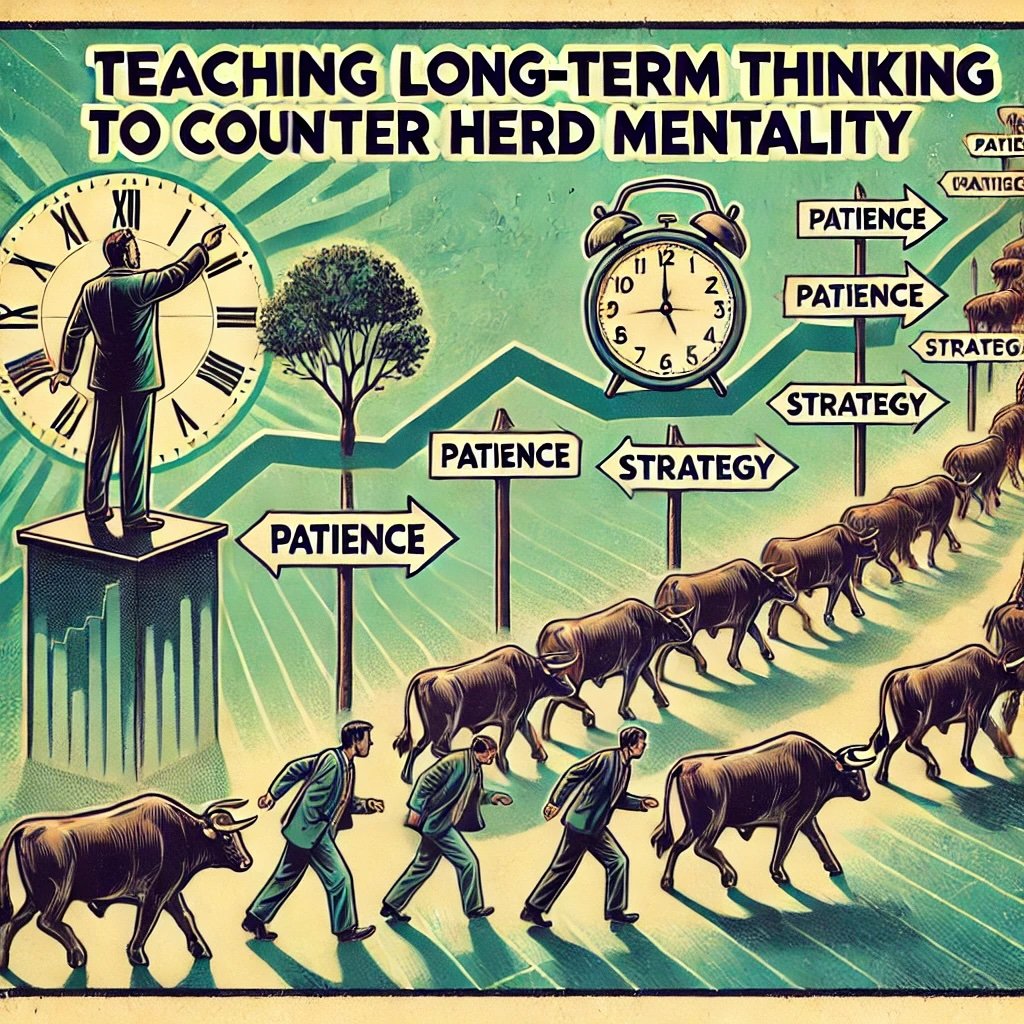
Teaching Long-Term Thinking to Counter Herd Mentality
Buffett’s Advocacy for Long-Term Investments
It’s hard to read about Warren Buffett without encountering his emphasis on long-term thinking. He consistently reminds people that if you’re not willing to hold a stock for ten years, you shouldn’t hold it for ten minutes. This perspective runs counter to the high-frequency trading culture we see today, where daily or even hourly trades are common. Buffett’s mantra encourages investors to look at companies as real businesses with real cash flows, rather than lottery tickets for short-term gains.
He didn’t arrive at this philosophy overnight. It evolved from his early education under Benjamin Graham and was refined through decades of personal experience. By the time he took the reins at Berkshire Hathaway, he was convinced that patient capital could outperform the restless capital that jumps at every headline.
Challenging the Herd Mentality
Herd mentality is a potent force. When everyone is buying, you feel a strong urge to join them. When everyone is selling, it feels safe to follow suit. But time and again, Buffett has proved that bucking the trend—when combined with proper analysis—can yield massive profits.
He’s been a contrarian in several industries. Insurance was unloved when he began investing heavily in it. Railroads seemed like old-world relics until Berkshire Hathaway took a significant stake in BNSF Railway. Even Apple, which he avoided for years, eventually became one of his largest holdings once he viewed it more as a consumer products juggernaut than a speculative tech play. In each case, he examined the herd’s assumptions, found them lacking, and positioned himself accordingly.
The Power of Simplicity and Consistency
Part of Buffett’s allure is his knack for simplifying complex ideas. He doesn’t talk about advanced trading algorithms or employ jargon-laden speeches. Instead, he uses everyday language, folksy analogies, and unvarnished logic to explain his moves. This clarity resonates with ordinary investors, and it also helps to demystify the act of investing.
He’s also consistent. You can dig up interviews from the 1970s or 1980s and notice that he’s saying essentially the same thing he says today—focus on value, ignore the noise, be patient. That consistency builds trust. Investors come to see him as a steadfast figure in a chaotic market. And trust is a powerful psychological factor. It keeps people listening to him even in times when the market is screaming about different priorities, like high-growth speculation or day trading fads.
Teaching Through Shareholder Letters and Annual Meetings
Every year, Buffett pens a letter to Berkshire Hathaway shareholders. These letters are arguably as influential as any economics textbook, brimming with witty insights and lessons in market psychology. He discusses mistakes openly, praises successes humbly, and reiterates the importance of rational thinking. These letters have become must-reads for anyone serious about understanding long-term investing.
Then there’s the annual shareholder meeting, sometimes dubbed the “Woodstock for Capitalists.” Attendees pack an arena to hear Buffett and Charlie Munger answer questions for hours. The candid, relaxed format allows them to address everything from corporate governance to personal finance in a straightforward manner. It also offers a live demonstration of how these two seasoned investors think, communicate, and occasionally disagree (amicably).
Undermining Fear and FOMO
Today, social media can amplify “fear of missing out” (FOMO) on skyrocketing stocks or trending assets like cryptocurrency. Buffett’s posture effectively undermines this short-term hype. He reminds us that missing out on a few short-term gains is irrelevant if the long-term picture isn’t viable. Conversely, he also counters fear by reiterating that quality businesses remain resilient.
By framing stocks as partial ownership in real companies, Buffett shifts the conversation from daily price changes to corporate performance. This shift can relieve the emotional pressure many investors feel. Instead of constantly tracking volatile price swings, you focus on the company’s trajectory over years. This mental trick reduces the urge to follow the herd, whether that herd is stampeding toward a bubble or fleeing amid a market crash.
Continuous Reinforcement of Rational Thought
Finally, Buffett’s teachings serve as continuous reinforcement. Every public appearance, shareholder letter, or television interview circles back to the same themes. He doesn’t chase short-term fads. He does the homework, then invests with conviction. He remains calm in chaos and cautious in euphoria. Over time, this drumbeat of rationality sinks in, influencing countless investors to step back from emotional extremes and adopt a more measured approach.

How Warren Buffett Uses Market Psychology to His Advantage — 12-Question FAQ
What does Buffett mean by “be fearful when others are greedy, and greedy when others are fearful”?
He’s describing sentiment extremes. When euphoria pushes prices above intrinsic value, he becomes cautious; when panic pushes prices below intrinsic value, he becomes opportunistic. It’s a playbook for buying value created by crowd emotion.
How does he keep his own emotions from hijacking decisions?
He relies on pre-set rules (margin of safety, quality thresholds, price discipline), a long holding period, and a narrow circle of competence. Those guardrails reduce impulsive trades triggered by fear, FOMO, or headlines.
What role does the “Mr. Market” metaphor play in his psychology?
Borrowed from Ben Graham, “Mr. Market” is a moody business partner who offers changing prices daily. Buffett treats price quotes as offers to accept or ignore—never as instructions. That mental model creates detachment from volatility.
Why is patience such a powerful psychological edge for Buffett?
In markets, you’re not forced to swing. Buffett waits for “fat pitches”—rare, high-conviction opportunities—rather than chasing marginal ideas. Patience prevents overtrading, lowers error rates, and concentrates capital in best ideas.
How does maintaining large cash reserves exploit market psychology?
Cash is optionality. While others are forced sellers during panics, Buffett becomes a liquidity provider, negotiating favorable terms (e.g., preferreds, warrants) precisely because fear makes capital scarce.
How does he spot crowd irrationality in real time?
He watches for sentiment/valuation mismatches: narrative-driven surges, deteriorating underwriting standards, or “this time is different” claims during booms; indiscriminate selling and quality names thrown out during busts.
What behavioral biases does he actively guard against?
Overconfidence, confirmation bias, recency bias, and herding. He counters them with base rates (long histories), simple yardsticks (ROE, free cash flow), and a preference for businesses he fully understands.
How does the circle of competence reduce psychological error?
Limiting decisions to domains he understands shrinks unknowns and narrative seduction. If he can’t estimate intrinsic value with confidence, he passes—no matter how popular the story.
In crises, how does Buffett turn panic into profit without being reckless?
He seeks durable franchises with solvency paths, strong management, and clear cash generation. Price must overcompensate for risk. He structures downside protection (seniority, coupons) while keeping upside via equity or warrants.
How does he separate signal from headline noise?
He ignores short-term macro chatter and focuses on 5–10-year business economics: competitive advantage, unit economics, reinvestment runway, and stewardship. Price only matters relative to conservatively estimated value.
Can regular investors apply Buffett’s psychology without Berkshire-level resources?
Yes: define rules before emotions strike, dollar-cost average into broad indices or a few understandable moaty businesses, keep a small cash buffer, and commit to multi-year horizons. Process beats prediction.
What’s the simplest checklist to “think like Buffett” in turbulent markets?
Is this within my circle of competence?
Does it have a durable moat and honest managers?
Is price comfortably below conservative value (margin of safety)?
Am I prepared to hold through scary headlines for 5–10 years?
If any answer is “no,” pass.
Conclusion
Warren Buffett’s ability to use market psychology to his advantage isn’t about fancy formulas or high-speed algorithms. Instead, it hinges on a deep understanding of how human emotions—particularly fear and greed—drive market behavior. By observing investor moods and comparing them to business fundamentals, Buffett identifies moments when assets are overvalued or undervalued. He then leverages his patience, discipline, and large capital reserves to act decisively when everyone else is either too euphoric or too terrified to think straight.
He avoids overhyped markets, seeing them for what they often are: speculative frenzies waiting to collapse. He also thrives on undervalued opportunities, especially during crises, because he recognizes that fear can push prices below their intrinsic worth. His contrarian approach is guided by rules and metrics, ensuring he doesn’t let the crowd’s mood swings carry him off course.
Underpinning all these actions is Buffett’s relentless promotion of long-term thinking. He teaches investors to disregard short-term noise and daily market gyrations, urging them to focus on the underlying business prospects. He champions simplicity, transparency, and consistency. Through shareholder letters and annual meetings, he shares his philosophy openly, reinforcing the idea that successful investing is often a matter of patience, emotional control, and common sense.
What can we learn from this? First, we might adopt a calmer mindset. When markets soar, it’s wise to ask whether prices have gotten ahead of reality. When markets crash, it’s equally wise to see if valuable companies are now on sale. Second, we might learn to hold cash or safe assets in reserve, so we have the liquidity to act in times of panic. Third, we should remember that no single approach is failproof. Buffett has made mistakes. Yet, his successes stem from a willingness to course-correct, an aversion to ego-based decisions, and a focus on the bigger picture.
Ultimately, Buffett’s greatest skill may be his mastery of human nature. While everyone else wrestles with fear and greed, he remains centered. He steps in when others step out, and steps aside when they can’t stop piling in. That is how he harnesses market psychology to achieve exceptional results over decades. And that’s something we can all strive to emulate in our own investing and daily decision-making—stay calm, be rational, and never forget that markets, at their core, reflect the collective mood of millions of people. If you can keep your head when all about you are losing theirs, you just might find the best bargains of your life.
Important Information
Comprehensive Investment Disclaimer:
All content provided on this website (including but not limited to portfolio ideas, fund analyses, investment strategies, commentary on market conditions, and discussions regarding leverage) is strictly for educational, informational, and illustrative purposes only. The information does not constitute financial, investment, tax, accounting, or legal advice. Opinions, strategies, and ideas presented herein represent personal perspectives, are based on independent research and publicly available information, and do not necessarily reflect the views or official positions of any third-party organizations, institutions, or affiliates.
Investing in financial markets inherently carries substantial risks, including but not limited to market volatility, economic uncertainties, geopolitical developments, and liquidity risks. You must be fully aware that there is always the potential for partial or total loss of your principal investment. Additionally, the use of leverage or leveraged financial products significantly increases risk exposure by amplifying both potential gains and potential losses, and thus is not appropriate or advisable for all investors. Using leverage may result in losing more than your initial invested capital, incurring margin calls, experiencing substantial interest costs, or suffering severe financial distress.
Past performance indicators, including historical data, backtesting results, and hypothetical scenarios, should never be viewed as guarantees or reliable predictions of future performance. Any examples provided are purely hypothetical and intended only for illustration purposes. Performance benchmarks, such as market indexes mentioned on this site, are theoretical and are not directly investable. While diligent efforts are made to provide accurate and current information, “Picture Perfect Portfolios” does not warrant, represent, or guarantee the accuracy, completeness, or timeliness of any information provided. Errors, inaccuracies, or outdated information may exist.
Users of this website are strongly encouraged to independently verify all information, conduct comprehensive research and due diligence, and engage with qualified financial, investment, tax, or legal professionals before making any investment or financial decisions. The responsibility for making informed investment decisions rests entirely with the individual. “Picture Perfect Portfolios” explicitly disclaims all liability for any direct, indirect, incidental, special, consequential, or other losses or damages incurred, financial or otherwise, arising out of reliance upon, or use of, any content or information presented on this website.
By accessing, reading, and utilizing the content on this website, you expressly acknowledge, understand, accept, and agree to abide by these terms and conditions. Please consult the full and detailed disclaimer available elsewhere on this website for further clarification and additional important disclosures. Read the complete disclaimer here.




